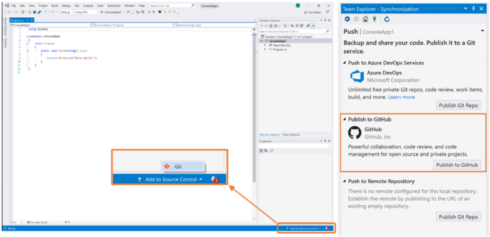
Microsoft has announced the release of both .NET Core 3.1 and Visual Studio 2019 16.4 this week.
.NET Core 3.1 includes fixes for .NET Core 3.0, which was released about two months ago. This release is a long-term supported (LTS) release, meaning that it will be supported for three years. According to Microsoft, waiting two months after releasing version 3.0 allowed them to select and implement the right set of improvements for an LTS release.
One major change in .NET Core 3.1 is that it removed some Windows Form controls. Removed controls include DataGrid, ToolBar, ContextMenu, Menu, MainMenu, and MenuItem. These controls had been replaced with more powerful controls in 2005 with the release of .NET Framework 2.0 and have not been available by default in the Visual Studio Designer Toolbox for years. By removing these controls, Microsoft will be able to focus on newer controls. As this is a change that could break applications, Microsoft recommends developers update applications to .NET Core 3.1 and move to alternative controls. The upgrade process is straight-forward, Microsoft explained, and is essentially “find and replace.”
RELATED CONTENT:
Microsoft makes big changes to .NET
.NET 5 merges Core and .NET Framework into one solution
Another update in .NET Core 3.1 is support for creating C++/CLI components to be used with .NET Core 3.0+ in Visual Studio 2019 16.4.
Also newly released, Visual Studio 2019 16.4 features hundreds of updates and fixes based on suggestions from the developer community.
It added the ability to publish to GitHub directly from Team Explorer. “We know GitHub integration brings value to your developer experience. Therefore, we are excited to announce a previous extension making its way into the Visual Studio 2019 product. The ability to have GitHub publishing done directly from Team Explorer has been a favorite because of its seamless communication with GitHub repositories,” Microsoft wrote in a post.
Another feature is XAML Hot Reload for Xamarin.Forms. This allows developers to make changes to the XAML UI and see them reflected live without needing to build and deploy. This will speed up development and make it easier to build, experiment, and iterate user interfaces, the company explained.
It also added the Container Tools window. This feature initially started as an extension in the Visual Studio Marketplace. The Container Tools window allow developers to list, inspect, stop, start, and remove Docker images and containers.
Other new features include XAML tooling improvements for WPF and UWP desktop developers, a pinnable properties tool, a preview of vertical tabs, C++ tooling improvements, and support for FIPS compliance mode.
More information on Visual Studio 2019 16.4 can be found here.






